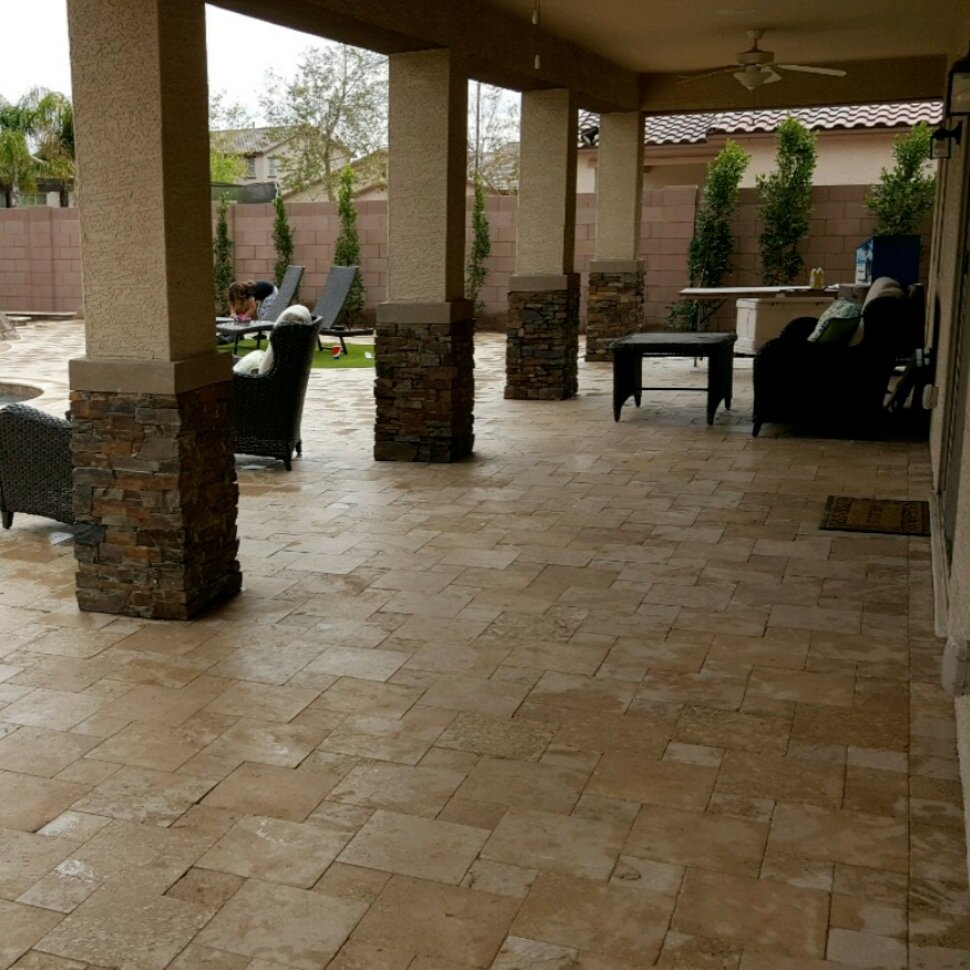Things To Consider When Sealing Your Pavers
Interlocking paving stones, or pavers, usually made of concrete, natural stone, brick, or clay, provide a low-maintenance, smooth surface used to complement many outdoor living spaces. They add timeless appeal and increase property value in driveways, walkways, and patios. Pavers are eco-friendly, and reduce landscape maintenance requirements, like watering or seeding costly lawns. The benefit and beauty of adding pavers to your hardscaping material decisions are tenfold compared to many other landscaping options.
When installing pavers, it's essential to consider using a sealant to ensure the space continues to look as stunning as the day it was first installed. This article discusses what to consider when sealing pavers and the benefits of doing so.
Why you need to use paver sealant
All pavers should be installed with some paver sealant. This important upkeep tool protects the pavers from fading and safeguards the concrete from being stained due to its porous nature.
What it protects
Paver sealers have two different types of protection: gloss or semi-gloss (film-forming) or penetrating water repellents (non-film-forming). The goal of the film-forming sealant is to create a barrier on the surface to protect the paver from damage. While the non-film-forming sealers penetrate the paver and protect from within, they both protect to keep your pavers lasting longer.
When to use paver sealant
Ideal weather conditions for applying the sealant to outdoor pavers is sunny and 75 degrees. We can probably say that's ideal for most occasions, but jokes aside, weather between 50 and 90 degrees works well, too.
Once the paver sealant is applied, it should be retouched every 3 to 5 years. Look out for signs of wear on the film-forming sealers as the protective barrier will begin to break down as time passes. You'll also start to notice changes in color for the non-film-forming sealed pavers.
It usually takes between one week and 30 days for sealers to fully cure, so be sure to check with the manufacturer before application.
The paver sealant application process
Paver sealing is like painting. You should clean the surface before getting started. In sunny, warm weather climates, pavers should dry and be ready for sealant in a few short hours. Colder weather climates, or areas with more shade, should wait for a full 24 hrs before applying sealant.
Once the paver surface is clean from debris, wiped of stains, and dry, you can start the application process. Maybe counter to what feels right, you need to keep the area continuously wet as you work for the application to go on nicely. Don't let the area dry while applying, just keep working and brushing as you go, similar to painting an interior wall or your fingernails. Don't stop mid paver and then try to pick up again.
Use a sprayer to apply the sealer more effectively and apply it to saturation. All of the paver pores and crevices need to be fully covered. Follow up with a dry roller paintbrush to sop up excess sealant and avoid unsightly drips or lines. For best results, always follow instructions provided by the manufacturer.
When too much is too much
Do not over-apply paver sealant. You can accidentally ruin the look of the pavers by reapplying the sealer too often.
Don't overthink it. If you follow the directions and these simple tips, you're one step closer to beautifully sealed pavers and a landscape or driveway to envy!
North Valley Stone Supply LLC is a premier provider of stone copings, fire glass, polymeric sand, and pavers in Phoenix and surrounding areas. Our pavers come in various colors and sizes. Call us today to place an order.

